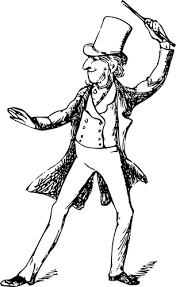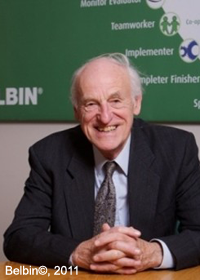Belbin's team roles
Abstract
To create the best team work, you need to know about how the different team workers behaves at their workspace and how to get the best out of the team members. The Belbin team roles can help you with identify the different team members strength and weaknesses. This can be used in all different kinds of projects and can help you create a team which have a high performance. Belbin's team roles test looks at how people behave in team work and which roles suits the different team members best. This article will help you understand why you should use Belbin team roles, how to use them and discuss the positive and negatives in using the method. This will be done by reading a lot of material such as Why use Belbin? [1]
Contents |
Dr. Meredith Belbin
Dr. Meredith Belbin has a doctor degree in psychology from Clare college in Cambridge. He has been an active management consultant in more than fifty years for many different international and private firms. He is a professor and researcher at Henley Business School in Oxfordshire, England. [2].
Dr. Meredith Belbin [3].
Dr. Meredith Belbin was born in 1926 [4] and is married to Eunice which is has a PhD focusing on the Psychology of ageing in industry.
Dr. Meredith Belbin originally identified the Team Roles as a part of a study of teams. This took place at Henley Business School. These study included a business simulation game. Dr. Meredith Belbin was invited in 1969 to use this business game as start if a study of team behavior. [5]
Dr. Meredith Belbin’s research gave to very important results. The first result showed it was possible to find and isolate nine different team roles, which could describe the inner psychological dynamic in a person as well as to describe the effects will have, partly on the employees and partly on the team. The second result was to make it possible to predict how well the team will preform from the different compositions of the nine team roles. [6]
Belbin team roles
Belbin team roles consist of 9 different team roles [7].
| Team Roles | Contribution | Aallowable weakness |
|---|---|---|
| Plant File:Lyse-ide.png | A creative, imaginate, unorthodox team member which selves difficult problems. They sometimes situate themselves far from the other team members [8]. | The team member can ignore incidentals or be too preoccupied to communicate effectively [9]. |
| Resource Investigater File:Telefon.png | The networker of the group. Are highly driven to make connections with people, the Resource Investigator may appear to be flighty and inconstant, but their ability to call on their connections is usefull to the team [10]. | The team member can be over optimistic and can lose interest once initial enhusiasm has passed [11]. |
Co-ordinator 
|
Seeks fairness and equity among team members. Those who want to make decisions quickly, or unilaterally, may feel frustrated by their insistence on consulting with all members, but this can often improve the quality of decisions made by the team [12]. | This team member can be seen as manipulative person and as a person who offloads personal work [13]. |
| Sharper File:Pisk.png | A dynamic team member who loves a challenge and thrives on pressure. This member possesses the drive and courage required to overcome obstacles [14]. | This person can be prone to provocation and offend peoples feelings [15]. |
Monitor Evaluater 
|
A strategic and descrening member, who tries to see all options and judge accurately. This member contributes a measured and dispassionate analysis and, through objectivity, stops the team committing itself to a misguided task [16] | This teammember can lack drive and ability to inspire others [17]. |
| Sharper File:Pisk.png | ||
| Sharper File:Pisk.png | ||
| Sharper File:Pisk.png |
How do I use Belbin team rolesLimitationsReferences
|
